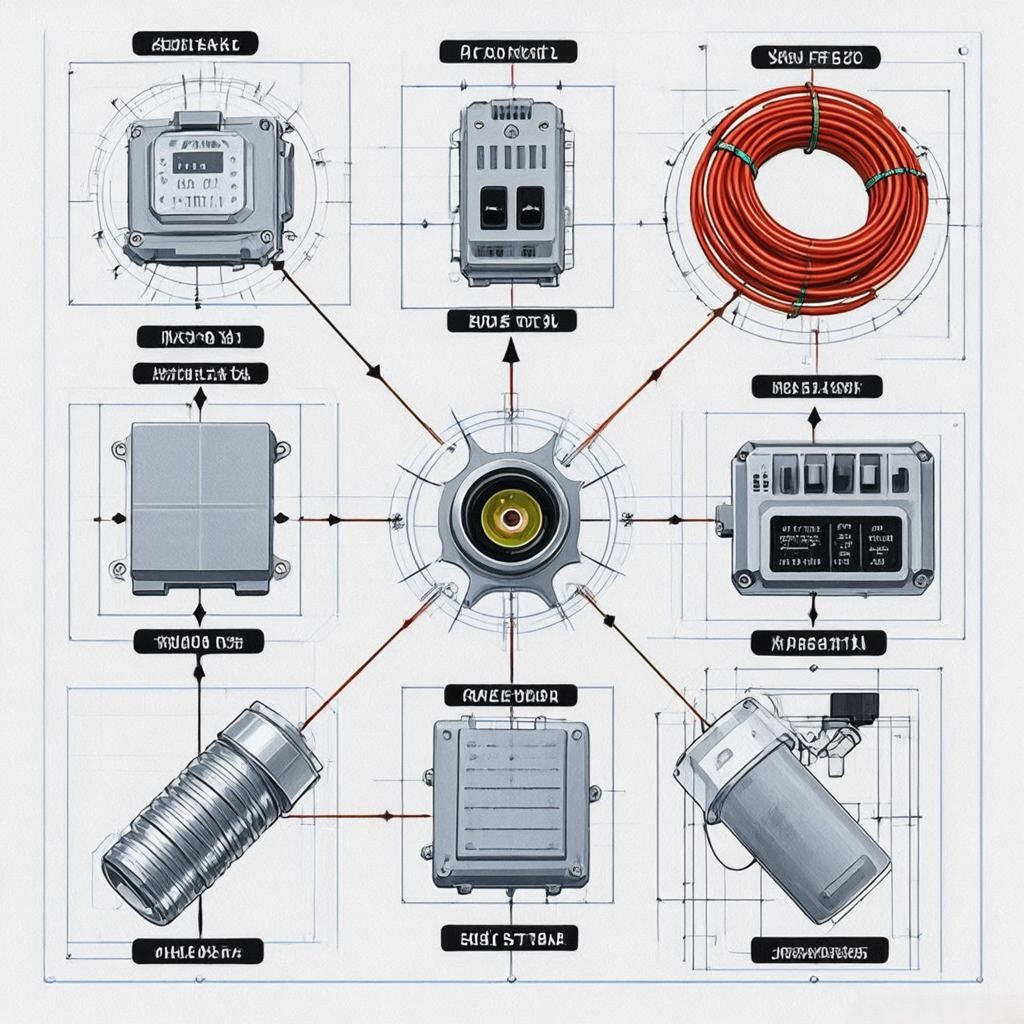Introduction
Modern commercial vehicles demand braking systems that transcend traditional pneumatics. Electronic Braking Systems (EBS) bridge this gap by merging precision electronics with robust air pressure control. However, the true potential of EBS lies in its software-driven adaptability—especially through firmware updates and pneumatic-electronic synergy. This blog explores how strategic software upgrades and advanced pressure modulation algorithms are redefining safety and efficiency in heavy-duty transport.
EBS Architecture: Where Software Meets Air Pressure
1. Core Components
- ECU (Electronic Control Unit): Executes braking logic via firmware (e.g., WABCO EBS3 uses 32-bit MCUs).
- Modulator Valves: Electropneumatic valves adjust brake chamber pressure (0–12 bar) at 50–100 Hz.
- Pressure Sensors: Monitor primary/secondary circuits with ±0.2 bar accuracy.
- CAN/J1939 Network: Facilitates communication between EBS, ABS, and engine/transmission systems.
2. Firmware’s Role
EBS firmware governs:
- Brake Force Distribution: Adjusts pressure per axle load (e.g., 60% front, 40% rear when unloaded).
- Trailer Coordination: Synchronizes tractor-trailer braking via ISO 7638 signals.
- Failure Responses: Activates redundancy paths during sensor/valve faults.
Firmware Updates: Unlocking Hidden Potential
Why Update?
- Bug Fixes: Resolve CAN bus timing conflicts or false fault codes (e.g., Bendix EC-80 Recall 2022).
- Performance Tuning: Enhance braking curves for specific applications (e.g., liquid tankers vs. dry freight).
- Regulatory Compliance: Meet updated UN R13 (brake assist) or Euro 7 emission-linked braking standards.
Update Workflow
- Pre-Update Checks
- Verify hardware compatibility (e.g., 2021+ ECUs may reject legacy firmware).
- Backup existing parameters (brake gain, trailer recognition profiles).
- Flashing Process
- Use OEM tools (e.g., Knorr-Bremse EDS Mobile) or J2534-compatible pass-through devices.
- Prioritize “differential updates” to reduce downtime (only modify changed firmware blocks).
- Post-Update Validation
- Test valve response times (e.g., full pressure buildup in <400 ms).
- Road-test on low-μ surfaces to confirm ABS/EBS handover stability.
Pneumatic Synergy: Precision Pressure Control Strategies
EBS software must harmonize with pneumatic hardware to eliminate lag and overshoot.
1. Adaptive Pressure Modulation
- Dynamic Ramp Rates:
- Aggressive Mode: 10 bar/sec for emergency stops.
- Eco Mode: 4 bar/sec for gradual deceleration (saves air and fuel).
- Load-Sensing Algorithms:
- Air suspension pressure data adjusts brake force in real-time (e.g., 1.2x pressure when GVWR exceeds 40 tons).
2. Redundancy Protocols
- Dual-Channel Pneumatics: If a valve fails, backup channels maintain 70% braking capacity.
- Software Watchdogs: Reboot ECU if CAN timeouts exceed 50 ms.
3. Trailer Integration
- ISO 7638-2 Compliance: EBS firmware auto-detects trailer types (e.g., ABS-equipped vs. non-ABS).
- Smart Quick-Release: Software-controlled dump valves prevent jackknifing during trailer disconnect.
Case Study: Fleet-Wide EBS Optimization for Mountain Logistics
A Norwegian fleet operating DAF XF trucks on steep fjord routes faced:
- Problem: Excessive brake fade due to inconsistent EBS/pneumatic coordination.
- Solution:
- Firmware Update: Installed PACCAR’s v4.2 EBS software with “Hill Descent Pro” mode.
- Valve Retuning: Adjusted modulator response curves to prioritize rear axle braking.
- Predictive Air Management: Pre-charged secondary circuit before descents.
- Results:
- Brake pad lifespan increased by 55%.
- Air compressor duty cycle reduced by 30%.
Future Trends: AI and Over-the-Air (OTA) Evolution
- Machine Learning in EBS
- Neural networks predict brake demand based on GPS topography data and driver behavior.
- OTA Updates
- Telematics gateways (e.g., ZF Openmatics) enable remote firmware patches.
- Security: AES-256 encryption and secure bootloaders prevent cyber tampering.
- Hydrogen-Pneumatic Fusion
- Hydrogen fuel cell waste heat warms pneumatic circuits in sub-zero conditions.
Maintenance Best Practices
- Firmware Hygiene
- Schedule updates during preventive maintenance (avoid mid-operation flashes).
- Validate checksums post-update (e.g., SAE J1939-73 standards).
- Pneumatic System Checks
- Monthly leak tests (max 0.5 bar/min loss).
- Annual lubricator service to prevent valve stiction.
- Training
- Certify technicians on OEM-specific tools (e.g., Volvo PTT).
Conclusion
EBS systems are no longer static hardware—they’re dynamic platforms where software updates and pneumatic precision converge. By embracing adaptive firmware, intelligent pressure control, and proactive maintenance, fleets can turn braking systems into strategic assets for safety and efficiency.
This guide equips fleet engineers to harness the full potential of EBS—where every software update and pneumatic tweak translates to safer highways and healthier bottom lines. 🚛💨





There are many variations of passages of Lorem Ipsum available, but the majority have suffered alteration in some form, by injected humour, or randomised words which don’t look even slightly believable.
test